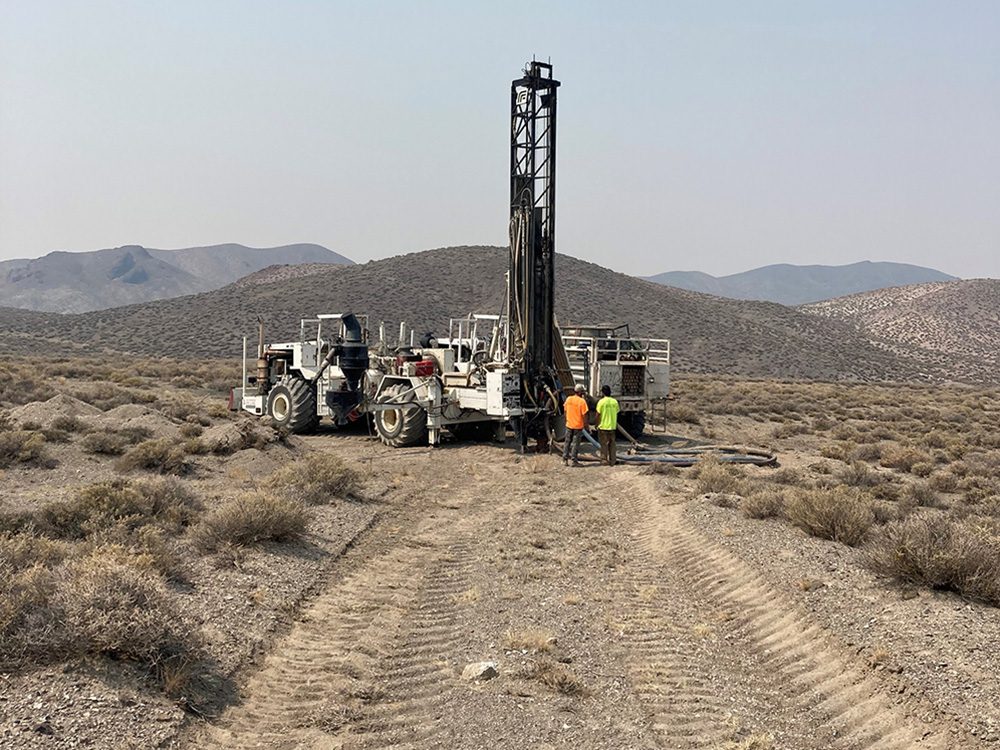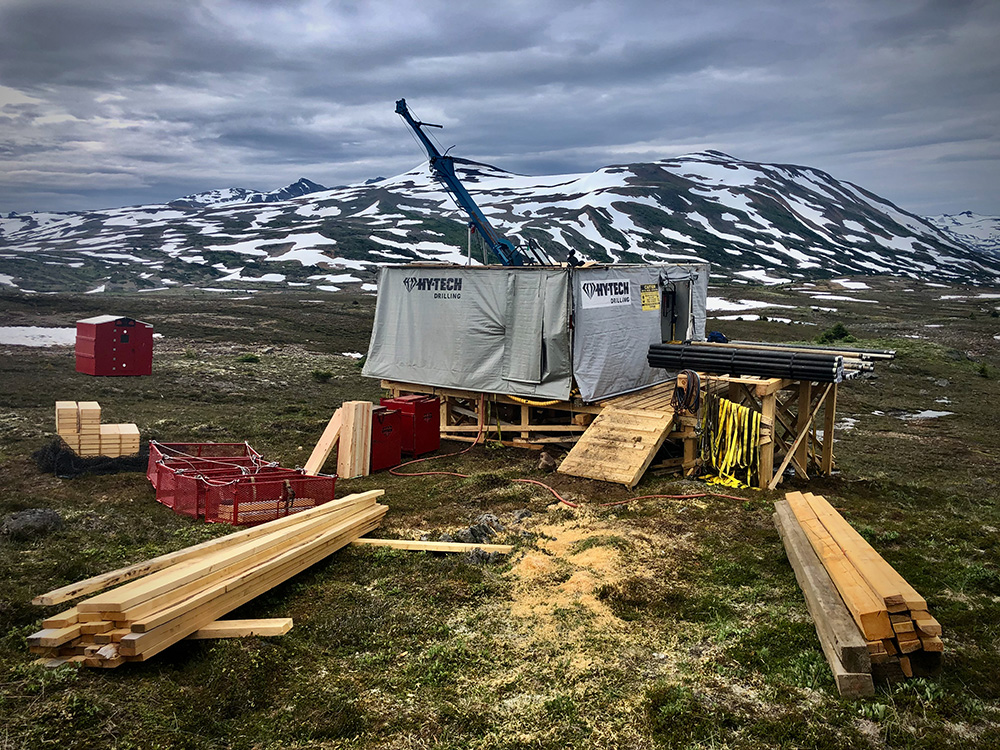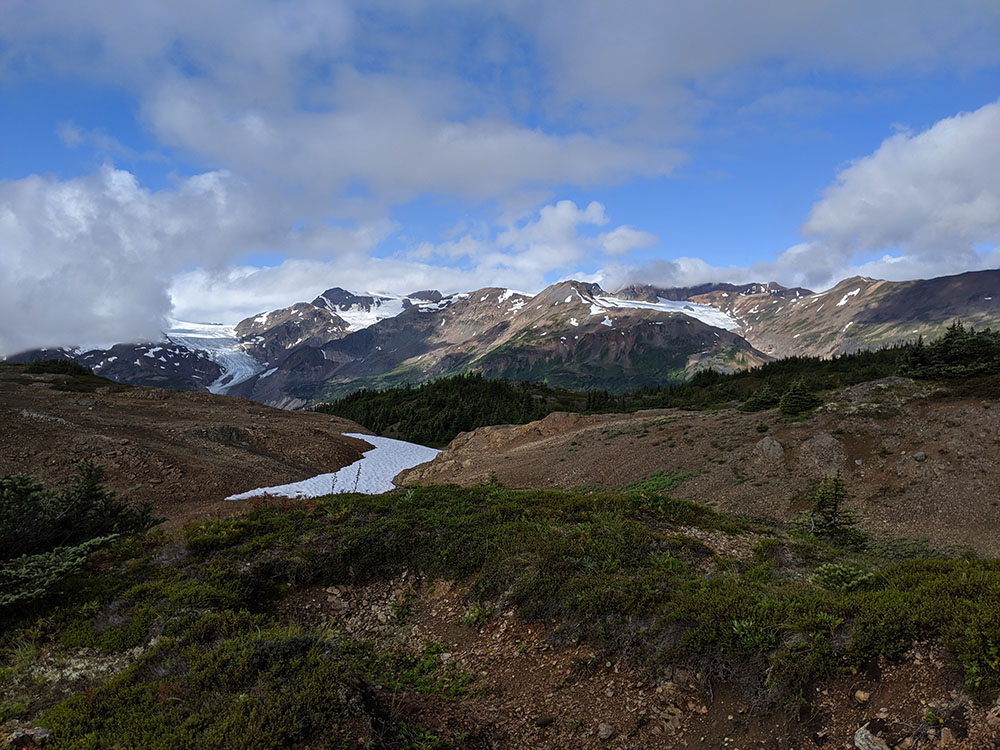About P2 Gold
P2 Gold is a Vancouver-based mineral exploration and development company launched in 2020 to advance early-stage precious metals and copper projects in favorable jurisdictions in the western US and British Columbia. The management team at P2 has a proven track record of success in all stages of mining, from discovery to profitable mining operations, including taking the Brucejack Mine in the Golden Triangle from discovery to commercial production in less than eight years. P2 is focused on advancing its BAM Project in northwest British Columbia, the newest gold discovery in the Golden Triangle and Gabbs Project on the Walker-Lane Trend in Nevada.
BAM – British Columbia’s Newest Gold Discovery
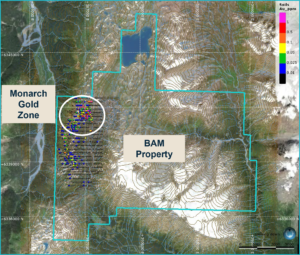
The BAM Project consists of ten mineral tenures that cover an area of over 8,100 hectares, located in the Golden Triangle approximately 150 kilometers northwest of Stewart, BC. Highway 37 and the Northwest Transmission Line are approximately 35 kilometers to the east of the property, and the Galore Creek Project access road is 1.7 kilometers to the southeast. P2 has an option to acquire a 100% interest in the BAM Project (see P2’s news release of July 2, 2020).
The BAM Project was discovered in the 1960s when copper focused regional exploration resulted in the discovery of the Galore Creek deposit, approximately 35 kilometers to the west, and the Schaft Creek deposit, approximately 20 kilometers to the northwest; both deposits are large copper-gold porphyry mineralizing systems. In the 1980s, exploration efforts on the BAM Project focused on gold; however, until P2’s 2020 exploration program, the BAM Project had not been systematically explored for large porphyry related copper-gold system.
The BAM Project consists of ten mineral tenures that cover an area of over 8,100 hectares, located in the Golden Triangle approximately 150 kilometers northwest of Stewart, BC. Highway 37 and the Northwest Transmission Line are approximately 35 kilometers to the east of the property, and the Galore Creek Project access road is 1.7 kilometers to the southeast. P2 has an option to acquire a 100% interest in the BAM Project (see P2’s news release of July 2, 2020).
The BAM Project was discovered in the 1960s when copper focused regional exploration resulted in the discovery of the Galore Creek deposit, approximately 35 kilometers to the west, and the Schaft Creek deposit, approximately 20 kilometers to the northwest; both deposits are large copper-gold porphyry mineralizing systems. In the 1980s, exploration efforts on the BAM Project focused on gold; however, until P2’s 2020 exploration program, the BAM Project had not been systematically explored for large porphyry related copper-gold system.
In August 2020, P2 completed a soil geochemical sampling program, which resulted in the discovery of the Monarch Gold Zone in area that had never been drilled in the northwest corner of the property. The 2020 exploration program at the BAM Project also included airborne magnetic and radiometric surveys, a 15-kilometer IP geophysical survey and geological mapping and prospecting. See P2’s news release of October 8, 2020 for BAM Project 2020 exploration program results.
In 2021, P2 completed a drill program at BAM consisting of six holes totaling 835.9 meters. The Monarch Gold Zone was tested with drill holes BAM-001, 002, 003, and 005, which were targeted on coincident IP chargeability anomalies with highly anomalous gold in soil values of up to 5.7 grams per tonne. The Jan Copper Zone was tested with drill holes BAM-004 and 006, which were targeted on soil geochemistry with values in excess of 1% copper and surface showings exposed in historical trenches. All four holes drilled to test the Monarch Gold Zone intersected gold and both holes drilled to test the Jan Copper Zone intersected copper (see P2 news releases dated August 30, 2021 and October 6, 2021).
In 2022, P2 drilled 13,958 meters in 95 drill holes and completed a Z‐Tipper Axis Electromagnetics airborne geophysical survey (the “ZTEM Survey”) and a ground-based natural source magneto-telluric geophysics survey (“NSMT Survey”).
The focus of the 2022 BAM Drill Program was to find the limits of the epithermal surface mineralization at the Monarch Gold Zone and provide geologic information to aid in the interpretation of the airborne and ground geophysical surveys. This interpretation of the airborne and ground geophysical surveys is essential to discovering the higher-grade feeder systems for the near-surface epithermal gold mineralization and any associated porphyry mineralization.
The 2022 BAM Drill Program and geological mapping defined multiple structural trends which converge at the Monarch Gold Zone and were active either during and/or after the mineralization event. Gold grades intersected by the drilling generally increase towards these structures, suggesting they are potentially related to a feeder system. Drill holes in the latter half of the program also showed that the conglomerate along the eastern edge of the Monarch Gold Zone is well mineralized for over one kilometer. The conglomerate lies along the contact with the More Creek Granite suggesting that the contact may be part of the feeder system for the gold mineralization. (See P2’s news releases of August 22, 2022, September 13, 2022, October 12, 2022 and December 6, 2022.)
Results from the NSMT Survey and the ZTEM Survey have been received and are being compiled to provide a three-dimensional interpretation of the BAM Project at depth. A review of the preliminary ZTEM 3D model confirms the northeast structural trends that are associated with the near-surface gold mineralization of the Monarch Gold Zone, which sits within a northeast trending resistivity high separating resistivity lows.
A prominent feature has been identified by the NSMT Survey, which is believed to be the feeder zone of the near-surface epithermal gold mineralization. This feature is the contact between the older granitic intrusive to the east with the sediments to the west and aligns with the structures that appear to be controlling the near-surface mineralization that has been intersected by drilling. This contact is potentially part of the feeder system for the near-surface epithermal mineralization. (See P2’s news releases of October 12, 2022 and December 6, 2022.)
Planning has commenced for the 2023 BAM Drill Program with a focus on locating the porphyry source of the near-surface gold and copper mineralization, which is believed to underlie the BAM Project claims, as well as the expansion of the near-surface gold mineralization..
Gabbs – Advancing to a Preliminary Economic Assessment in Nevada
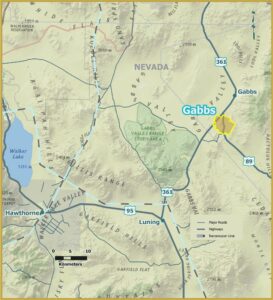
The Gabbs gold-copper project is located on the Walker-Lane Trend in the Fairplay Mining District of Nye County, Nevada. Gabbs has an Indicated Mineral Resource of 1.12 million ounces of gold equivalent or 0.65 million ounces of gold and 266.7 million pounds of copper (43.4 million tonnes grading 0.47 g/t gold and 0.28% copper) and an Inferred Mineral Resource of 1.64 million ounces of gold equivalent or 0.88 million ounces of gold and 376.1 million pounds of copper (69.9 million tonnes grading 0.39 g/t gold and 0.24% copper). (See P2’s news release of February 10, 2022).
The Gabbs Project is comprised of 543 unpatented lode mining claims and one patented lode mining claim covering four known zones of mineralization and comprising approximately 45 square kilometers (16 square miles). Nevada Highway 361, Gabbs Pole Line Road and a powerline cross the Gabbs Project. The gold-copper mineralization at three of the zones, Sullivan, Lucky Strike and Gold Ledge, is hosted within what are interpreted to be sills associated with an alkaline gold/copper porphyry. The gold mineralization at the fourth zone, Car Body, is interpreted to be low-sulphidation epithermal mineralization.
Due to the limited systematic exploration completed to date at Gabbs, P2 believes the full potential of each of the known zones of mineralization has yet to be recognized. The mineralized zones have not been tested along strike or at depth, and of the 494 holes drilled at Gabbs between 1970 and 2011, 180 holes (36%) ended in mineralization. Also, a significant number of holes drilled prior to 2004 were, depending on the focus of the operator, assayed only for gold or only for copper, not both metals.
Since acquiring the project in May, P2 has completed Phase One and Two metallurgical programs (see P2 news releases dated August 4, 2021 and May 13, 2022), geophysics, mapping and sampling, a production trade-off study to assess process options (see P2 news release dated October 19, 2021) and Phase One and Two drill programs (see P2 news releases of September 8, 2021, October 13, 2021, October 19, 2021, March 29, 2022, April, 19, 2022 and August 4, 2022).
In Addition, P2 Gold initiated a Preliminary Economic Assessment (“PEA”) in the second quarter of 2022 incorporating the results of the Phase Two metallurgical program (see news release of May 13, 2022) and the results of all drilling to date. The PEA will evaluate both a heap leach only option and a combination heap leach and milling option and is targeted for completion in 2023. (See P2’s news release of August 4, 2022).
Qualified Persons
The 2022 Updated Mineral Resource Estimate was prepared under the supervision of Eugene Puritch, P.Eng., FEC, CET of P&E Mining Consultants Inc. of Brampton, Ontario, who is an Independent Qualified Person (“QP”), as defined by National Instrument 43-101, Standards of Disclosure for Mineral Projects. Ken McNaughton, M.A.Sc., P.Eng., Chief Exploration Officer, P2 Gold, is the QP responsible for the BAM Project and Gabbs Project exploration programs.
